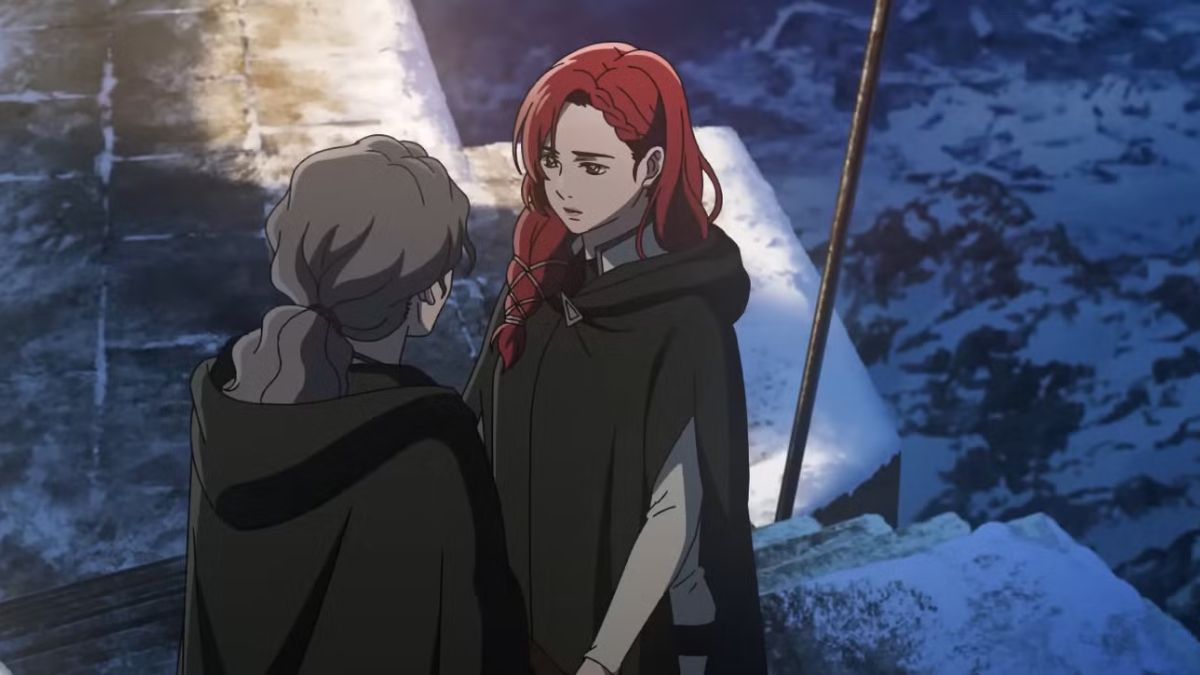‘War of the Rohirrim’ passes one test that the ‘The Lord of the Rings’ trilogy didn’t

To love something is to also acknowledge its faults. Peter Jackson’s The Lord of the Rings trilogy is far from perfect, and loving it means addressing that the newer entrants into Tolkien’s Middle-earth—Prime Video’s The Lord of the Rings: The Rings of Power, and now Kenji Kamiyama’s anime film The Lord of the Rings: The War of the Rohirrim—might be doing some things better than the legendary trilogy.
For example, did you know the LOTR trilogy doesn’t exactly pass the Bechdel Test? Or rather, it passes the test, but on such a minor technicality during one of its Rohan scenes, it should rightfully not even count. However, The Lord of the Rings: The War of the Rohirrim beautifully rectifies this oversight and aces the test with flying … horses! That’s twice now that the Riders of Rohan have saved the day, m’kay?
What is the Bechdel Test?
For those unaware, the Bechdel Test is an informal way of assessing the representation of women in film, TV, books, and other art forms. There are essentially three rules that a work of art must pass. First, there have to be at least two named female characters. Second, these two characters must interact with each other. And third, their conversation must be about something other than men.
If you think this is an easy test to ace, you’d be surprised how many acclaimed films released as recently as this year would not pass this test. Because let’s face it, even if a movie has a strong female character, chances are she’s also the only female character, and sometimes her presence might be the result of tokenism.
Does The Lord of the Rings trilogy pass the Bechdel Test?
It’s not that the stories of J.R.R. Tolkien don’t have enough female characters; we’ve got some truly badass and tragic women in Middle-earth, whose stories are dying to be told. In fact, in The Rings of Power, we glimpse this with characters like Númenor’s Queen Míriel, who gets a few scenes with Galadriel. Yet the fact remains that these stories are about the realms of men, and you’ll rarely find scenes where two female characters genuinely interact. For example, Galadriel is Arwen’s grandmother, yet we never get scenes between the two, because Tolkien hasn’t written them.
While Peter Jackson improvised several scenes and added much to Arwen’s character in his films, this aspect was never altered. So how does the trilogy pass the test then? A shieldmaiden of Rohan comes to the rescue! In one of the scenes in The Lord of the Rings: The Two Towers, we see Éowyn talk to a little girl, Freda, who has escaped the orc attack on her village with her brother Éothain on a horse. There’s also Morwen, their mother, who helps them escape and is later seen hugging Éowyn at Helm’s Deep; however, her name is not spoken in the film.
Therefore, this scene set in Rohan allows the trilogy, or rather, the second film, to pass the Bechdel test (barely).
How does The War of the Rohirrim pass the Bechdel Test?
Since the first WotR trailer dropped, it’s been pretty obvious that the film has a female protagonist—the King of Rohan Helm Hammerhand’s (Brian Cox) daughter, Héra, voiced by Gaia Wise. The story is about how, when a civil war broke out following a rejected marriage proposal and the men were lost to death, Héra led her people to safety and defended the throne like a true shield maiden of Rohan.
Once again, it would’ve been easier to have Héra, who was Helm’s only daughter (he had two sons and a nephew), be the sole female character in the film, and have it still be a feminist story due to her courage and valor. Yet, it would have failed the Bechdel Test, because the three main rules weren’t met.
However, The War of the Rohirrim doesn’t fail its women and therefore the test. In the film, two female characters interact with Héra and play a part in her victory against Wulf (Luke Pasqualino), the ruthless leader of the Dunlendings. First, there’s Olywn (Lorraine Ashbourne), a warrior maiden in service of Héra who has practically raised her since her mother passed away in childbirth. Olwyn isn’t just some governess or handmaiden; she can fight better than some men, can lead, and also understands strategy.
Then there’s another character, Old Pennicruik (Janine Duvitski), a bent, creepy old woman living at the Hornburg fortress (later known as Helm’s Deep) who at first scares our heroine with her stories about a ghost that haunts the fortress. Eventually, she removes her cloak and offers help, and we finally see the real her. There’s a sweet moment where these three women form a strength circle before going to war, and you can see the spirit of the shield maidens of Rohan reflected in them.
The fact that the stories of Rohan are where LOTR seems to be passing the Bechdel Test is saying something. No wonder Miranda Otto’s Éowyn, who would go on to fight alongside the Riders of Rohan and was inspired by stories of her ancestors’ bravery, is the perfect narrator for this film!
Have a tip we should know? tips@themarysue.com